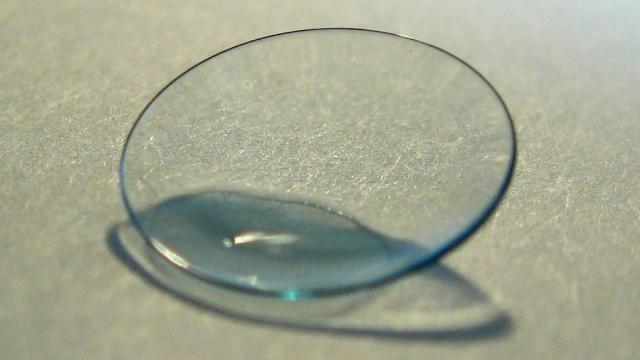The results of a new clinical trial may provide more hope for children with myopia, commonly known as nearsightedness. The study found that kids as young as 7 who regularly wore powerful bifocal contact lenses experienced less worsening of their myopia than kids who wore less powerful or single-vision lenses over a three-year period. That suggests these children may be able to preserve more of their eyesight into adulthood.
Myopia is one of the most common vision conditions to affect people under the age of 40. Though the causes of myopia are complex, genetics and environment are both thought to play an important role. In particular, studies have suggested that too much schoolwork and reduced outdoor play before preschool may contribute to myopia, likely because kids spend too much time focused closely on nearby objects.
Myopia tends to show up at around age 7 and continues to worsen until the teenage years, on average. Doctors have been studying ways to slow down its progression as much as possible during that time period, including specialised eye drops and bifocal glasses and lenses. But this latest trial, known as the Bifocal Lenses In Nearsighted Kids, or BLINK, study, is the first to empirically compare whether high-powered, soft bifocal contact lenses are better for children with myopia than other types of contacts.
When measuring people’s far- or nearsightedness, eye doctors rely on a metric called dioptres. Relative to normal sight, people with myopia have a negative dioptre. Though both single-vision and multifocal eyewear can correct someone’s vision so that they can see far away things accurately, multifocals also add more dioptres, which can improve vision in people whose eyesight is impaired in more than one way (bifocals are the most common type of multifocals). As a drawback, multifocals tend to be harder to physically adjust to than single-vision eyewear, and they more limit a person’s field of vision.
In the trial, nearly 300 children, ages 7 to 11, were randomised to receive one of three types of contacts. The kids received either high-powered bifocals (an addition of 2.5 dioptres), medium-powered bifocals (1.5 dioptres), or single-vision lenses. Then they were observed for the next three years.
The main finding of the study, published in JAMA, was that kids who had the strongest bifocal lenses experienced the least decline in their myopia (an average -0.60 dioptres), while kids given single-vision lenses experienced the greatest decline (an average -1.05 dioptres). And though bifocals are known to be hard for adults to tolerate at first, with many adults experiencing symptoms like headaches, migraine aura, and balance problems, the kids wearing the strongest corrective lenses reported no added adverse effects, likely because their eyes are better able to compensate.
“The long-term implication is that children who wear multifocal contact lenses will be less nearsighted as adults, which will ultimately make them less likely to experience sight-threatening complications such as retinal detachment, glaucoma, and myopic maculopathy (poor vision even with glasses or contact lenses due to high amounts of nearsightedness),” lead author Jeffrey Walline, a professor of optometry at The Ohio State University, said in an email.
Walline and his team do plan to keep following the children in this study for years to come, having them continue to wear bifocal lenses for two years before switching them to single-vision lenses. The hope is that these improvements last once they stop wearing bifocals. But according to Walline, the results of this trial and others show that doctors should be trying to do everything they can to slow the progression of myopia and that parents and children should be told upfront about the treatments available today. Currently, one-third of Americans are thought to have some amount of myopia. In China, the majority of children are nearsighted.
“This is a change from simply prescribing them vision correction that improves vision but has no effect on the progression of nearsightedness,” Walline said.
At the same time, though the children in this study were able to wear bifocals with no problems, it’s likely that this strategy won’t work for everyone. In that case, Walline added, there are still other options, such as orthokeratology (the use of specialised contracts worn at night that temporarily reshape the cornea) or low-concentration atropine eye drops, which dilate the pupils and may stop the eyes from elongating.
